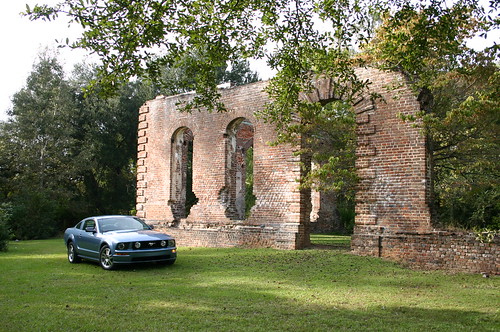Headstones to History
 While it is near the center of the fast growing seat of Berkeley County, there remains a steady calm, a hallowed hush, but for the happy songs of birds on that day.
While it is near the center of the fast growing seat of Berkeley County, there remains a steady calm, a hallowed hush, but for the happy songs of birds on that day.Faithful readers will find ruined brickworks a recurrent theme in our rolling album. These are often churches which have cemeteries which have headstones of note. Whether by unique design, age or unusual inscriptions we are drawn to these markers. In the same cold ground lay both victor and vanquished, assassin and martyr, players and spectators of their times. The headstones give us some sense of the nature of those commemorated. Some are pushing up daisies and some are probably pulling them down as they did in their living years. Here as in other burial sites we note the peace which came finally after a long active and rewarding life often described in the stone. We also note the short lives of children ended before they really began often by diseases in the distant past, more often by mistake and madness in modern times. They were robbed of the opportunity to make a history.
Where we note the record of long productive lives, we think " well done " in a detached sort of way, but where we see the death of a child a century ago it feels like a fresh sorrow. Those robbed of a chance to make their own history we mourn the most.
Why do we embrace and pose with ruins of ancient structures? While grave markers seek to tell posterity of the departed flesh, these ruins are headstones to history. They tell the broader story of the history of the times. They are the last traces of those errands into the wilderness of the New World and bear the markings of the influence of man and nature upon those efforts.
Upon the sacred turf we tread lightly, move gently among the ruins and take our leave in muffled tones with the proper clutch release to prevent leaving our mark. It is a compact between decent people that the remains of old souls be respected. With the exception of inevitable lovers' initials cut into softened mortar, we also leave ruined buildings to themselves. The history of Biggin Church, however, tells of repeated attacks upon its house of worship to such an extent that the faithful made off with most of the bricks to avoid further insult to the physical plant of their faith. That is an interesting story which hopefully does not gain favor with the living today in other places.


0 Comments:
Post a Comment
<< Home